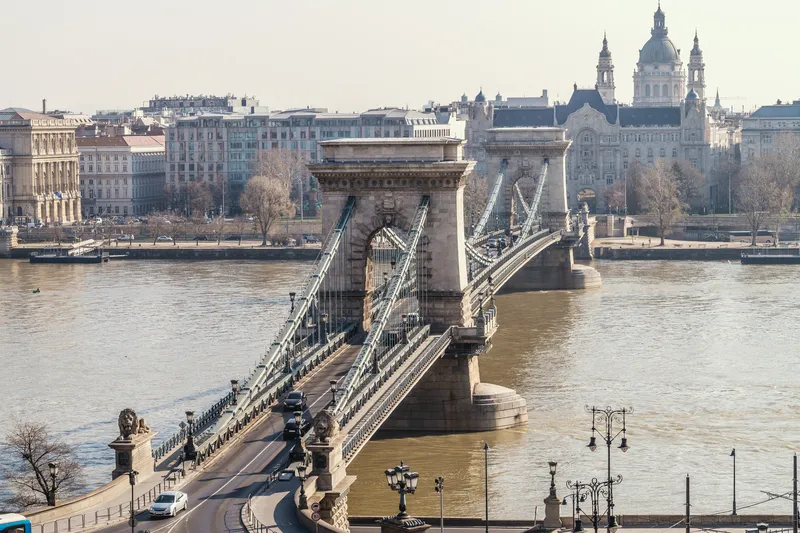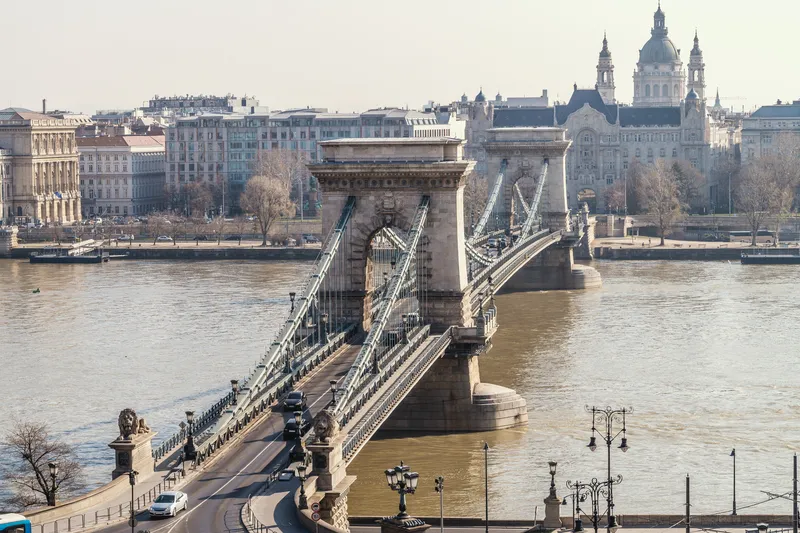
A-Hid has won the tender to renovate the landmark Chain Bridge in the Hungarian capital Budapest with an offer of €51.1 million.
The Budapest Public Transport Centre (BKK) announced the deal, noting the work is set to start by the end of February with completion scheduled for autumn 2023.
BKK had received four tenders for the renovation of the city's Széchenyi Chain Bridge, named after István Széchenyi, a major supporter of its construction. The 380m-long, 14.8m-wide suspension bridge was built between 1839 and 1849. When opened, it was the first permanent bridge over the Danube River that connected the opposite towns of Buda and Pest – now the Hungarian capital. At the time, its centre span of 202m was one of the longest in the world.
The bridge's cast-iron structure was updated and strengthened in 1914. During World War II, the bridge was blown up by the retreating Germans in January 1945. Only the towers remained standing but the bridge was reopened after extensive reconstruction in 1949.
The Széchenyi Chain Bridge is one of only two surviving bridges designed by English engineer William Tierney Clark. The other is a suspension bridge in England over the River Thames at the town of Marlow, up-river from London.
Renovations to the historic Széchenyi Chain Bridge and a nearby road tunnel have been long-awaited and at one time were shelved due to cost concerns. The municipality of Budapest recently announced that it will cover the cost of the renovations amid concern that a federal government loan for a portion of the work may not be approved.
A-HID recently completed a major two-year renovation of the Queen Elizabeth Bridge in the wine producing area of Tokaj, in north eastern Hungary and about 230km from Budapest. The bridge, over the Tisza River, was widened to accommodate cycling and pedestrian paths. Other works included rebuilding of concrete edges, replacement of railings, improvements to cladding and an overhaul of the lighting system, according to the construction company.








